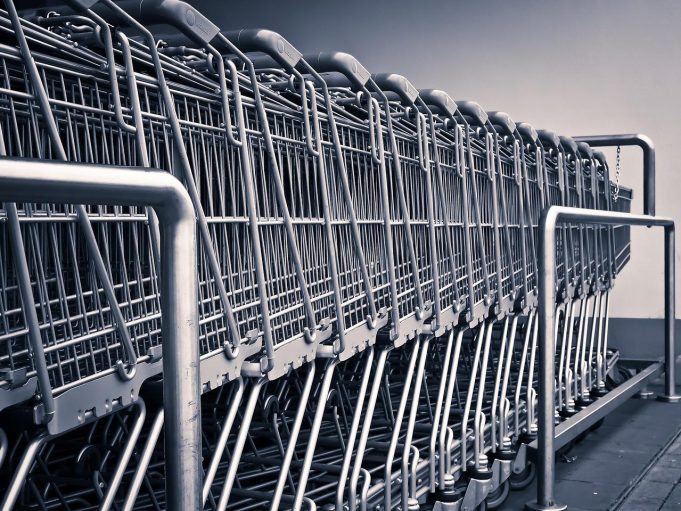Across Germany and around the world work in similar fashion to each other. For your essential supplies such as food and beauty needs, supermarkets will have what you need. Within a traditional supermarket across the globe, you simply go into the store, with either a shopping trolely or basket, fill it up with what you need and pay and end when you go through checkout. How Amazon have started a revolutionise the supermarket sector with its very own physical stores called ‘Amazon Go’ in countries across the globe, causing a change in our grocery shopping routine.
In this respect, one of the main differences is that Amazon Go shops have no tills. But it is certainly not the only innovation that the company is bringing forward. Here, we take a look at some of the modern ideas that Amazon is offering its customers.
Personal shop assistant
Who doesn’t know Alexa? She has become a staple of many households, turning off lights and playing music in your living room at your command. Now, you can find her offering assistance on shop shelves too and is a prominent feature of your shopping experience in Amazon Go stores. Scattered across the store, these clever devices are able to point you towards the right aisle and provide you with extra information on the products for sale.
Not only that, but digitised stores offer customers the possibility to keep an eye on their spending. In fact, as you get hold of your chosen goods, it automatically sends you emails with your receipts and allows you to learn more about your purchases with digital descriptions.
As well as changing our grocery shopping routines, this new experience may also impact what we eat. Indeed, with heaps of content at our disposal, grocers can actively shape our diets and help us make conscious, healthier choices when food shopping. It is the perfect blend between browsing around physical shops and enjoying the comfort of online information.
Shifting from online to onsite
This leap from digital stores to physical mall spaces may surprise a few people. But the truth is that it shouldn’t really raise too many eyebrows. In fact, as mentioned, Amazon stores do not faithfully replicate a standard shopping experience. Conversely, your journey through its shelves and aisles has been designed with technology, innovation, and efficiency in mind.
Ultimately, this is why Amazon outlets have no need for checkouts. Its stores use the same technology and innovation that is adopted in self-driving vehicles, as cameras follow the movements of both customers and products to register how much your shopping basket is worth. Once you’ve filled your bags, you are free to leave the shop – exiting the main entrance is your checkout experience. In the meantime, your online Amazon account will be charged.
This whole process provides the customer with two primary advantages. First of all, you can shop in a swift, efficient, and enjoyable manner. Secondly, fewer employees in stores translates to lower staff costs and, therefore, cheaper product prices. With the rise of discount marketers such as Lidl and Aldi, these modern ideas could be precious for other German grocers and retailers. As of 2020, there were 4,159 Aldi and 3,226 Lidl stores across the country. To keep in step with their ‘affordable’ competitors, other German supermarkets could take a forward-thinking leaf out of Amazon’s agenda.
Boost for fellow businesses
As Amazon continues to grow in the grocery sector, it is easy for other companies in the field to feel threatened by their competition. However, this should give grocers some food for thought: physical shops do not belong in the history books. Of course, the advent of Amazon Go creates extra competition, but it also revitalises the industry and supports in-store shopping instead of encouraging handy, online purchasing.
For example, the success of online shopping has encouraged supermarkets to embrace the ‘click and collect’ system. Moreover, the increase of scan-as-you-shop devices and self-service checkout points demonstrates that grocers are keeping in step with the times.
Amazon can actively support both growing and alternative small businesses registered as sellers on the multinational’s platforms. Amazon Go stores can also be used as fulfilment centres for emerging grocers and companies. Furthermore, the birth of its physical shops will create both construction and engineering jobs, as these innovative technological mazes need to be built in the first place.
With an increasing need for hygienic and safe shopping locations, the manufacturing sector can make the most of Amazon’s growth too. The expansion of fulfilment centres and factories need to guarantee security, which includes the introduction of a hygienic regime and stainless Gehäuse to keep employees safe at all times.
Finally, the contactless nature of Amazon in-store shopping arrives in a period when social interaction may still be worrying for some customers. Hence, a contactless supermarket may help people feel more comfortable and secure when out on their shopping duties.
To conclude, the innovations brought to the table by Amazon could promote successful ideas for German supermarkets, grocers, and other retail sectors. In this sense, both the fashion and hospitality retail fields could benefit from these modern introductions, where products can be taken as your account gets automatically charged. Ultimately, there are countless lessons to be learned, and Amazon can truly operate as a source of inspiration for many different industries.










